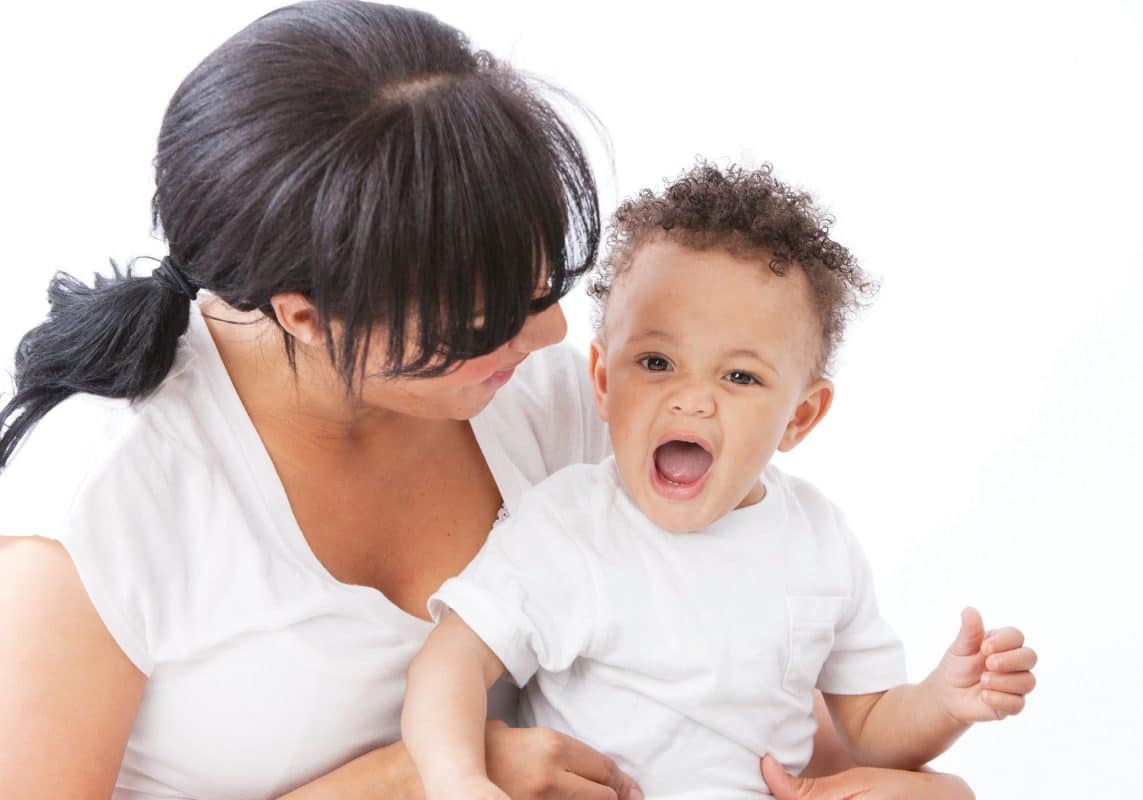BEAT THE TEETHING STAGE WITH SOME SIMPLE FIXES
Starting at around 6 months old, your baby just might sink her teeth into you. If it were a book series, there’d be 20 volumes, because that’s how many pearly whites erupt from a baby’s gums in her first three years of life. And let’s not forget the prequels: the gumming, the drooling, the sleepless nights… Right about the time you exit the newborn months and start to get more rest, their teeth begin to enter, and with them more fussiness and disrupted nights.

But our babies have it worse, no? Parents have coffee to cope with fatigue, plus the knowledge that this, too, shall pass. Babies just know their gums hurt like “who’d-da-thought-it,” as my kids’ grandmother often says. And for all babies know, the discomfort could go on forever. That’s enough to make anyone sad and cross.
Luckily during the newborn days, you honed your soothing skills. Whatever they are, whip them out again. Bouncing on a yoga ball, shadow-boxing to radio static—no one is here to judge. But we are here to encourage you to comfort your little one as only you can, because he needs you when his gums are hurting.
Helpful Teething Facts
The American Academy of Pediatrics (AAP) and American Dental Association (ADA) offer these helpful facts about teething:
• Baby teeth not only help infants eat solid foods but also aid with speech and create room for adult teeth.
• The lower central front incisors erupt first, then the upper incisors, lateral incisors, canines and molars.
• Teeth are often “exfoliated” (lost) in the same order they erupted.
Teething Do’s & Don’ts for Parents
• Do offer safe, clean and cold chewables for your baby, such as chilled teething rings, wet washcloths and spoons. Did I mention safe and clean?
• Do gently rub your baby’s gums.
• Do brush their teeth twice per day once they emerge.
• Do use bibs to absorb drool and to prevent skin irritation from wet clothes.
• Don’t confuse signs of illness such as fever, diarrhea, coughing and vomiting with teething; they’re unrelated. If your infant presents these symptoms, consult with your pediatrician to determine cause and treatment.
• Don’t give topical analgesics, such as teething gels containing benzocaine, to babies under 2 years old. The AAP warns that benzocaine can have serious side effects in infants when dosed improperly, including seizures and the rare, but serious, condition methemoglobinemia.
• Don’t offer your baby amber teething necklaces. According to the AAP, they pose choking and strangulation dangers.
• Don’t pacify teething babies by letting them sleep with bottles. Tooth decay results from extended exposure to liquids containing sugar.
If you’re nursing your baby and the, er, clamp comes down, kindly but firmly let her know you’re not a teething toy. Then consider wearing a BPA-free silicon teething necklace while you hold her so you can immediately offer an acceptable alternative—in style!
Looking for More Teething Advice?
Visit the American Academy of Pediatrics (aap.org) and American Dental Association (ada.org) for more helpful tips to soothe your wee one’s gums.
is an architect who designs and writes for families. Her blog is theCoconutgirl.com.
YOU MIGHT LIKE



